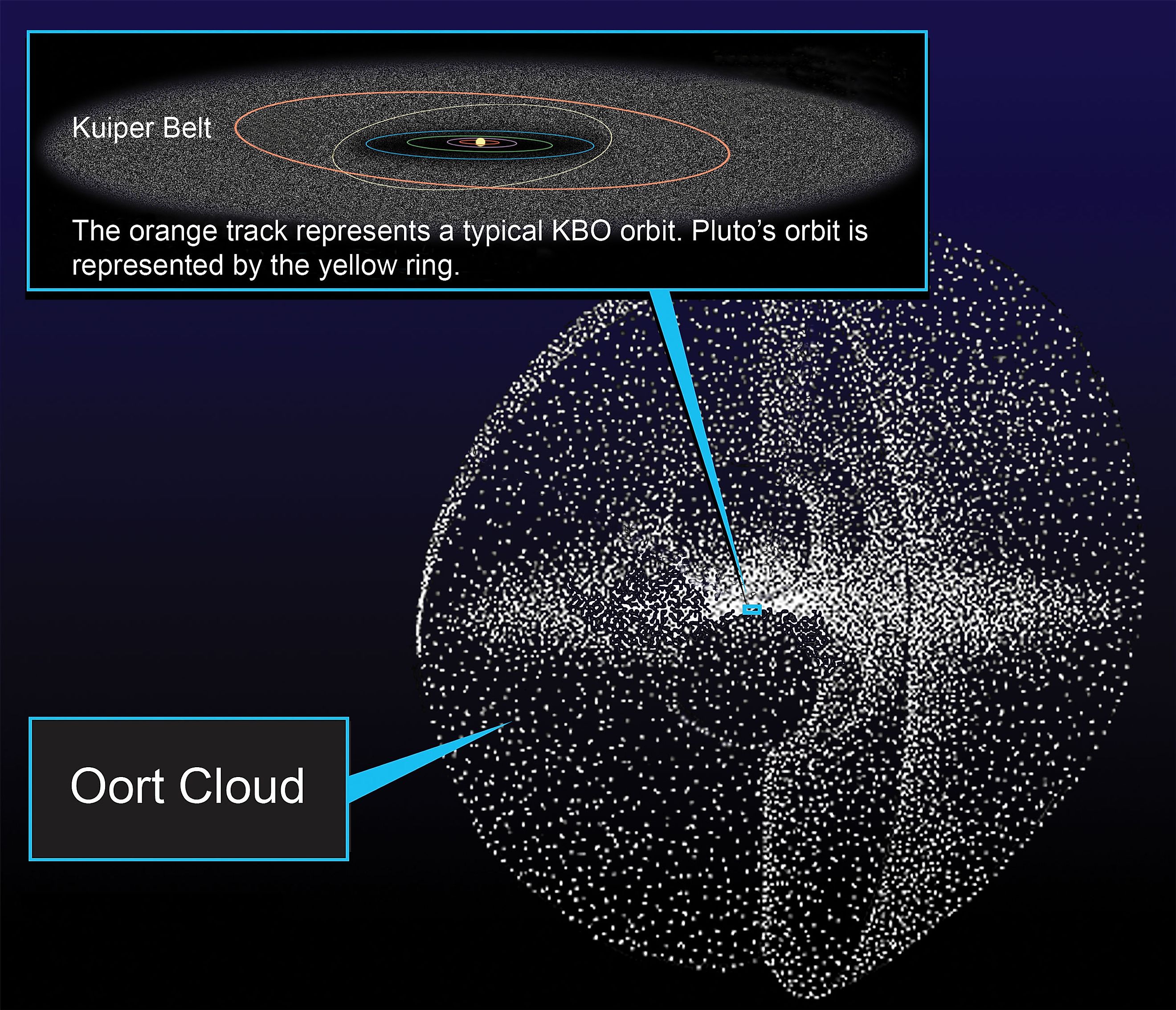
Oort Cloud
The size of our solar system extends far beyond the outer planets. Neptune is the farthest known planet from the sun at a distance of 2.8-billion miles (4.5-billion kilometers), yet it is nowhere near the solar system's edge. The farthest region from the sun is the Oort Cloud, a shell of comets and planetary debris that separates the solar system from what lies beyond. The Oort Cloud is so far away from the sun that it doesn't make sense to use typical forms of measurement such as miles or kilometers. Instead, for simplicity, astronomical units will be used. One astronomical unit (AU) is the distance between the Earth and the sun, roughly 93-million miles (150-million kilometers). The Oort Cloud begins at an estimated 2,000 AU from the sun and extends a distance of 100,000 AU. As a reference, Pluto orbits the sun at roughly 50 AU. To get an idea of just how far away the Oort Cloud is, the Voyager 1 spacecraft is currently the farthest human-made object from Earth and travels roughly one million miles a day. At its current speed, it would take Voyager 1 approximately 300 years to reach the Oort Cloud and another 30,000 years to reach its edge. Even if you were to travel at the speed of light, it would take about one month to reach the Oort Cloud and over one year to reach its edge.
History Of Discovery
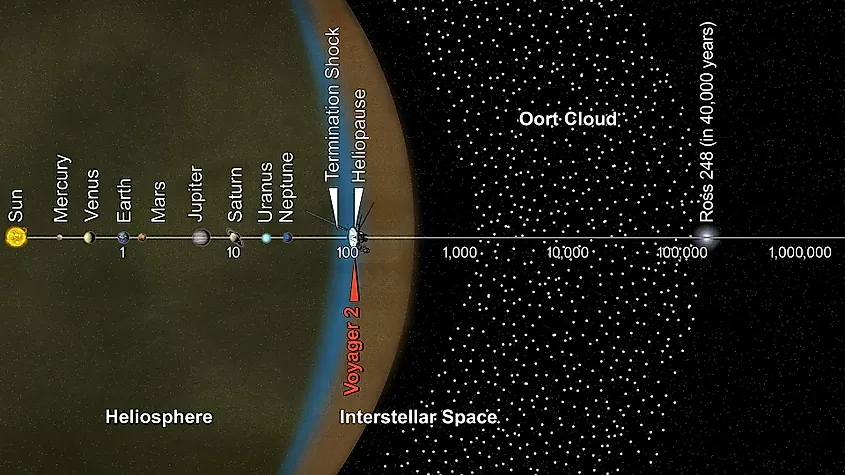
Since the sun and all the planets exist inside the Oort Cloud, it is impossible to observe it directly. The only way you could physically see the Oort Cloud would be to exit the solar system and observe it from outside. Given how far the Oort Cloud extends, this is currently impossible to accomplish, so astronomers rely on other methods to determine its existence. The existence of the Oort Cloud was first proposed in the early 20th century after observing the orbital path of some comets. Comets are primarily composed of ice, and they occasionally find themselves in the inner solar system, where they can be seen from Earth. Comets typically have predictable orbits that bring them back towards the sun at consistent intervals. There exist two types of comets: short-period comets and long-period comets. Short-period comets often complete one orbit of the sun in a hundred years or less, while long-period comets may take thousands of years to complete one rotation. The orbital path of most comets is also highly elliptical, meaning that they traverse vast distances from the outer solar system to the inner solar system. The existence of the Oort Cloud was first proposed as an explanation for long-period comets. In 1932, the astronomer Ernst Öpik predicted that long-period comets originated in a vast cloud of comets in the far outer areas of the solar system. In 1950, the astronomer Jan Oort claimed that since the orbits of comets are unstable, every comet will eventually collide with the sun or be thrown out of the solar system by the gravitational pull of a planet.
Furthermore, since every comet visits the inner solar system repeatedly, they are gradually broken apart by the sun's heat. Oort claimed that, given this information, comets could not have formed in their current orbits. Instead, he claimed, every comet originates in an outer shell of debris that encircles the solar system. Given Oort's predictions, it's no wonder that this outer shell of comets was named the Oort Cloud.
Evolution Of The Oort Cloud
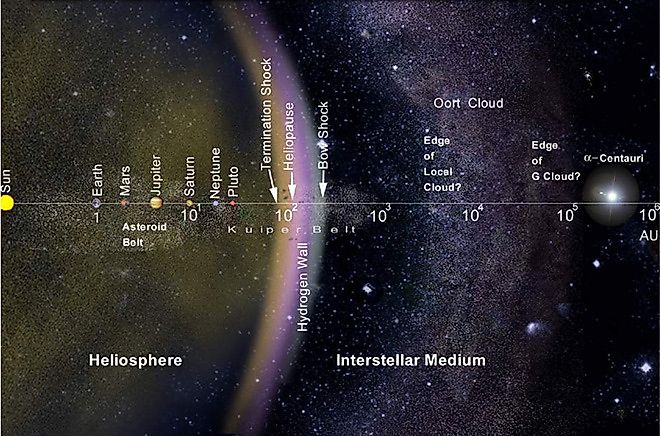
The Oort Cloud began forming shortly after the birth of the sun. Like all planets, the Oort Cloud formed from the protoplanetary disk that encircled the young sun. However, the Oort Cloud is unlikely to form at its current distance from the sun. Instead, the Oort Cloud formed in the region of the gas giants. The gravitational pull of the gas giants would have caused the orbits of planetary debris to become unstable and highly elliptical, causing most of it to be flung into the far outer regions of the solar system. For the Oort Cloud to find itself in a stable orbit far away from the sun, the gravitational pull from other nearby stars likely played a role. The sun may be alone today, with the nearest star being over four light-years away, but this was not the case when the sun first formed. The sun was likely one of many stars to emerge from the same cloud of hydrogen, and the gravitational pull of other stars probably played a significant role in the Oort Cloud's formation. In fact, around 50% of the Oort Cloud is believed to be material that formed around other stars. Models of the Oort Cloud's formation suggest that its mass peaked around 800-million years after the formation of the sun. At this time, the process of accretion and planet formation began to end, and thus the rate of depletion exceeded the rate of creation in the Oort Cloud.
Composition And Structure Of The Oort Cloud
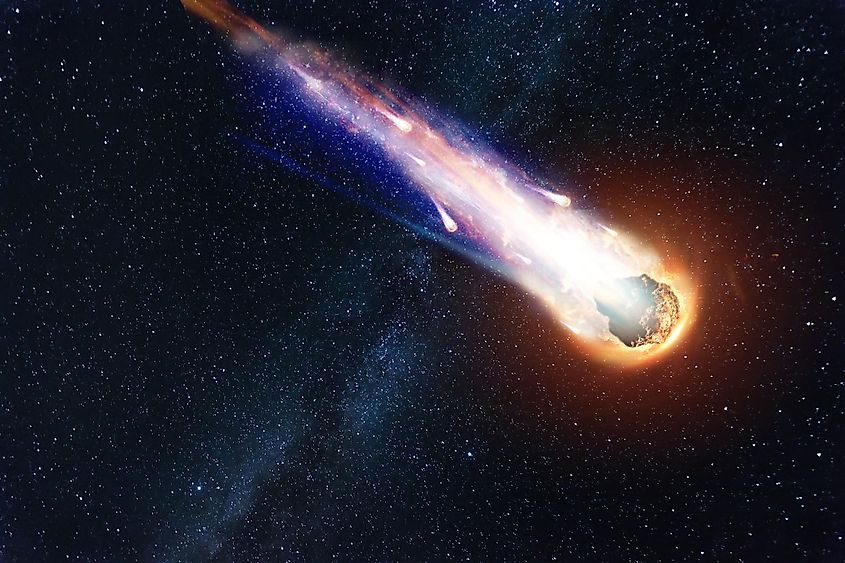
The Oort Cloud can be thought of as a large sphere of material that encircles the solar system in terms of its shape. The Oort Cloud is divided into two: an outer part and an inner one. The outer Oort Cloud is spherical, while the inner Oort Cloud is more of a donut shape (torus shape). The inner Oort Cloud extends to about 50,000 AU, while the outer Oort Cloud extends to a distance of 100,000 AU. The sun's gravity weakly binds the outer Oort Cloud, and over time, it loses material to the surrounding space. Throughout billions of years, the outer Oort Cloud would cease to exist.
Interestingly, the existence of the inner Oort Cloud explains why the outer Oort Cloud still exists. The inner Oort Cloud supplies the outer regions with more comets and planetary material. The inner Oort Cloud contains far higher material than the outer regions. In fact, astronomers predict that, as a whole, the Oort Cloud has trillions of objects. With so many comets, you may think that the Oort Cloud is massive, yet its mass is likely only five times that of the Earth.
The composition of the Oort Cloud is determined by examining the composition of comets that pass near the Earth. Most observed comets are primarily water ice, methane, ethane, carbon monoxide, and hydrogen cyanide. However, some comets have compositions similar to asteroids found within the Asteroid Belt, suggesting that not every comet within the Oort Cloud is composed mainly of ice.
How Comets Traverse The Solar System
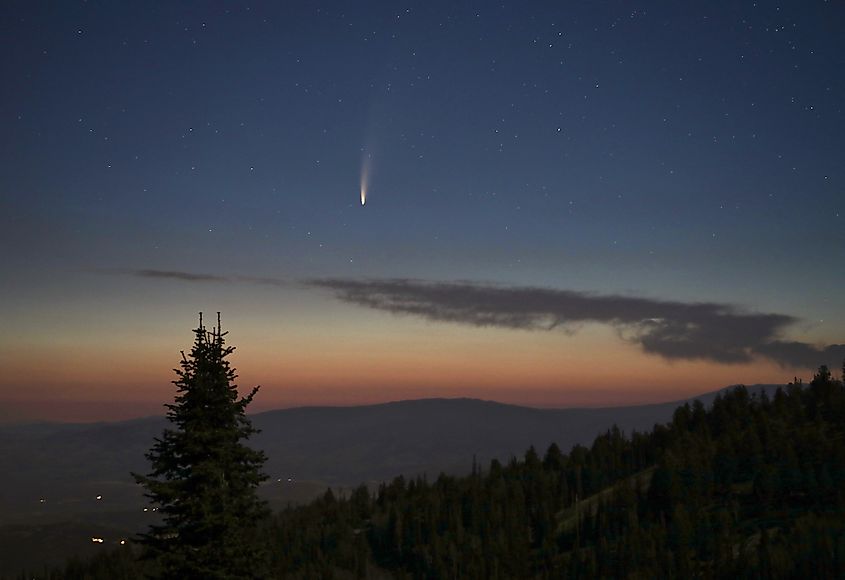
How do comets so far away find their way to the inner solar system? Comets that orbit in the far outer Oort Cloud are so far away that the gravitational pull of the sun and planets is negligible, and they are unlikely to cause any comets to come hurtling towards the sun. Rather than objects within our solar system disturbing the orbits of comets, it is more likely other nearby stars that cause comets in the Oort Cloud to move towards the inner solar system. Every star in the Milky Way galaxy is in constant motion, including the sun. Occasionally, stars may pass very close to each other, and when this occurs, the orbits of some objects can be altered. In the case of our solar system, it is possible that, in the distant past, another star system passed through the Oort Cloud and disrupted the orbital paths of some comets, sending them on a trajectory to the inner solar system.
Terms
| Term | Description |
|---|---|
|
Oort Cloud |
The large shell of comets and planetary debris that encircles the entire solar system. |
|
Inner Oort Cloud |
The region of the Oort Cloud that stretches from 2,000 AU to 50,000 AU. It is a donut-shaped structure of comets. |
|
Outer Oort Cloud |
The region of the Oort Cloud that stretches over 100,000 AU in distance. It is spherical in shape. |
|
Astronomical Unit (AU) |
An astronomical unit (AU) is a measure of distance, where one AU is the exact distance from the Earth to the sun. One AU is equal to 93-million miles (150-million kilometres). |
|
Comet |
A comet is an astronomical object that is primarily composed of various ices, the most notable of which is water. All comets originate in the Oort Cloud. |
|
Long-Period Comet |
A long-period comet is a comet whose orbital path is highly elliptical, taking the comet over vast distances through the solar system. Long-period comets will usually take many thousands of years to orbit the sun. |
|
Short-Period Comet |
A short-period comet is a comet that typically orbits the sun every hundred years or less. |











